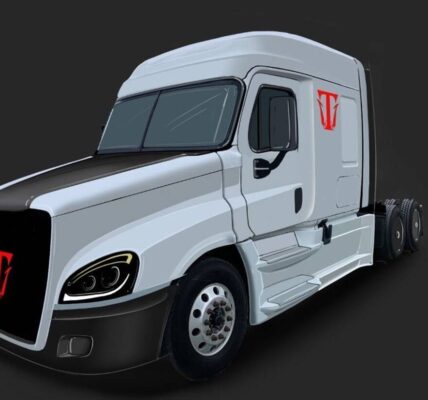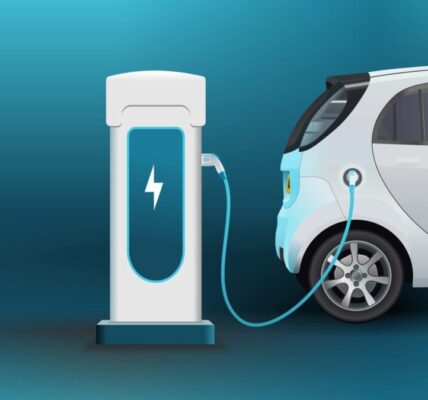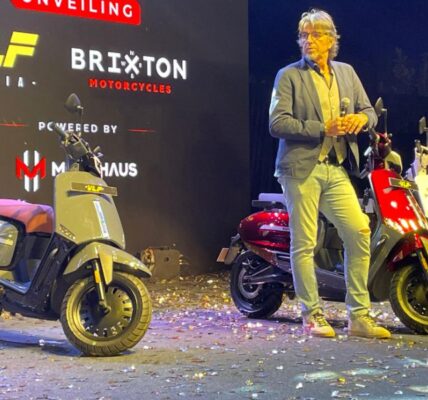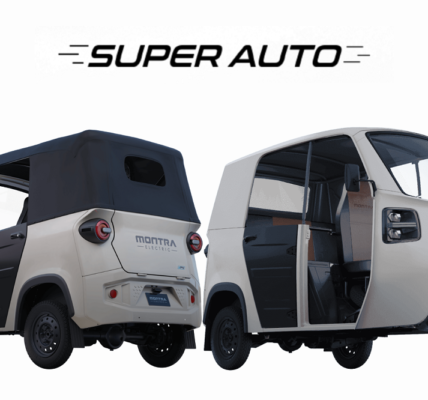The odds of India meeting the world’s most ambitious targets for the electrification of its road transport are improving all the time, with its vast fleet of two and three-wheelers at the forefront.
As Narendra Modi’s government aims for an outright ban on fossil-fuelled commercial vehicles by 2030 and a target of at least 30 per cent electric vehicles (EVs) for the rest of the road fleet by the same date, the statistics are heading in the right direction. Electric car sales in India in the first quarter of 2023 doubled what they were in the same period in 2022, according to the International Energy Agency. And trade body India Energy Storage Alliance reported the EV market will expand at a compound annual growth rate of 49 per cent all the way to 2030.
In this unique market, it’s a measure of the dominance of the “e-rickshaws” that characterise India that nearly 15 million of the predicted 17 million EV sales in the target year of 2030 will be two-wheelers. “All the key experts from EV and clean energy support the fact that the two and three-wheeler segment is going to be the game changer for EV revolution in India,” reports Indian Energy Storage Alliance from a recent conference.
If those experts are correct, by 2030, eight out of ten sales of e-two and three-wheelers will be electric, slashing pollution and oil imports. If sales meet these latest predictions, it will eliminate an estimated 850 million tonnes of CO2 emissions and US$207 billion of oil that would otherwise be used.
India’s EV revolution all started with FAME – the Faster Adoption and Manufacturing of Electric Vehicles. Now four years old, the government’s updated FAME II initiative is due to run out in 2024 after kickstarting the EV transition in a nation long wedded to economical but polluting internal combustion engine (ICE) transport. And although FAME II may be extended, its subsidies, tax breaks and other incentives have shown how important official support is in the shift to clean transport. With New Delhi as the catalyst, other states have followed suit with their own unique EV policies such as the establishment of inner city electric-only zones.
In every one of the last four years, the government has raised its FAME II budget, essentially an incentive scheme in the form of subsidies for two and three-wheelers. In 2023–24, subsidies are up 80 per cent to just over the equivalent of AU$1 billion. Once state budgets are added, the total goes a lot higher.
According to news source India Briefing, it took a while for the automobile industry to take advantage of the EV schemes. More than half of the subsidies in 2021 went begging. But that changed dramatically in 2022, and it now appears that the 2030 target of at least 7,000 e-buses, half a million e-three-wheelers and a million e-two-wheelers could be met.
As FAME II does its work, the sticker price of e-wheelers is forecast to fall to those of fossil-fuelled rickshaws as early as 2024 due to declining prices for batteries and economies of scale as domestic manufacturers buy in foreign technology.
Simultaneously, there’s a rapid development in domestic production of componentry, notably batteries at giga-scale. Abandoning earlier restrictions, the government is allowing 100 per cent foreign direct investment in factories, which is already bearing fruit with home-grown technologies being sold outside India in what promises to be a valuable long-term export earner.
In a traditional market, the automotive industry still has a job convincing buyers of the merits of e-rickshaws.
With the writing on the wall, the automotive industry is rapidly electrifying its products. Giant conglomerate Mahindra & Mahindra more than doubled EV sales in the 2022–23 financial year from 17,500 to nearly 37,000 and launched new models such as the Zor Grand, a cargo vehicle that sold 23,000 in its first year and offers “higher savings, higher earnings and a longer warranty” than its ICE equivalent according to the manufacturer.
In a traditional market, the automotive industry still has a job convincing buyers of the merits of e-rickshaws. One of the leading manufacturers, Okinawa Autotech, says “there’s still a huge percentage [of potential buyers] that are doubtful about electric two-wheelers”, but points out that the vehicles are faster than diesel-fuelled models, can travel up to 140 kilometres on a full charge, and that battery-swapping stations are developing rapidly. Honda and Piaggio, which has a 100 per cent-owned subsidiary in India, are just two manufacturers among several that are pursuing a battery-swapping strategy.
This could be the way to go in winning over reluctant customers. As Kasturi Gomatham, Global Head of Battery Swapping at Shell, told the recent conference, “Battery swapping decouples certain critical links that inherently create bottlenecks for EV adoption. For instance, the concept decouples grid from that of the dynamic EV-charging needs and decouples battery from the vehicle itself. This enables users to not feel the brunt of the battery upfront cost and extend vehicle life beyond that of the battery packs.”
However, from a standing start, the charger market is growing rapidly. According to the Indian Energy Storage Alliance, it’s heading for 46.5 per cent compound annual growth rate with the help of industry giants outside India who sense huge opportunities and are working with local retailers to install chargers in parking areas and forecourts.
Ultimately though, rising petrol prices may prove the most effective catalyst, and at the time of writing, they were heading up in India.







